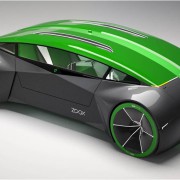Jennifer van der Kleut
Fairfax County, Virginia is working on positioning itself at the forefront of transportation technology by hosting an autonomous and connected vehicle event.
On Wednesday, May 3 the county will bring together elected officials, transportation experts and technology developers to discuss the future of transportation in the region in a moderated panel as well as offer demonstration rides.
Among the elected officials attending will be Chairman Sharon Bulova and Supervisor John Foust from the Fairfax County Board of Supervisors.
“Virginia has positioned itself as a leader for technological innovation,” Bulova said this week. “With top researchers road testing their products here, local companies have already begun investing in and advancing this technology and contributing to growth in our economy.”
Among the other panelists will be representatives from the Virginia Tech Transportation Institute (VTTI). The institute operates one of the commonwealth’s largest “smart roads,” which is 2.2 miles long and includes three bridges, and allows developers to test autonomous and connected vehicles. Controlled weather stations and varying pavement conditions allow for testing in abnormal conditions.
Many Fairfax County officials say they think innovative technology such as self-driving capabilities and vehicle-to-vehicle communications could benefit the local region in countless ways.
“I think it’s an open road when it comes to how driverless cars will impact the county and country as a whole,” said Supervisor Foust, who chairs Fairfax County’s Economic Advisory Commission. “There are huge economic, safety, environmental and mobility benefits.”
There are many experts who theorize that driverless cars can reduce congestion, reduce the need for so much parking in busier cities, and help reduce the mounting costs brought about by thousands of vehicle accidents each year.
“I’ve seen reports that say the economic impact could be upwards of $1 trillion. Self-driving cars could also improve safety, reducing insurance rates. And, this technology could save millions in fuel consumption,” Foust added. “We’re also hopeful that this technology will benefit the mobility needs of our seniors and people with disabilities.”
Members of the public are invited to come out to the Fairfax County Government Center, located at 12000 Government Center Parkway in Fairfax, on Wednesday, May 3 from 12-5 p.m. The event will offer refreshments and networking opportunities at the start, followed by the panel, open discussions, and demonstration rides in test vehicles at both the start and finish.
Among the featured panelists will be John Estrada, the CEO of eTrans Systems, a Fairfax-based company that manufacturers connected-vehicle software and technology. Estrada is also the founder of DriverlessTransportation.com. Estrada will be displaying and demonstrating some of eTrans Systems’ connected-vehicle technology and offering demo rides during the event.
Space is limited, so advance registration is recommended. People can register through the Fairfax County government website.

